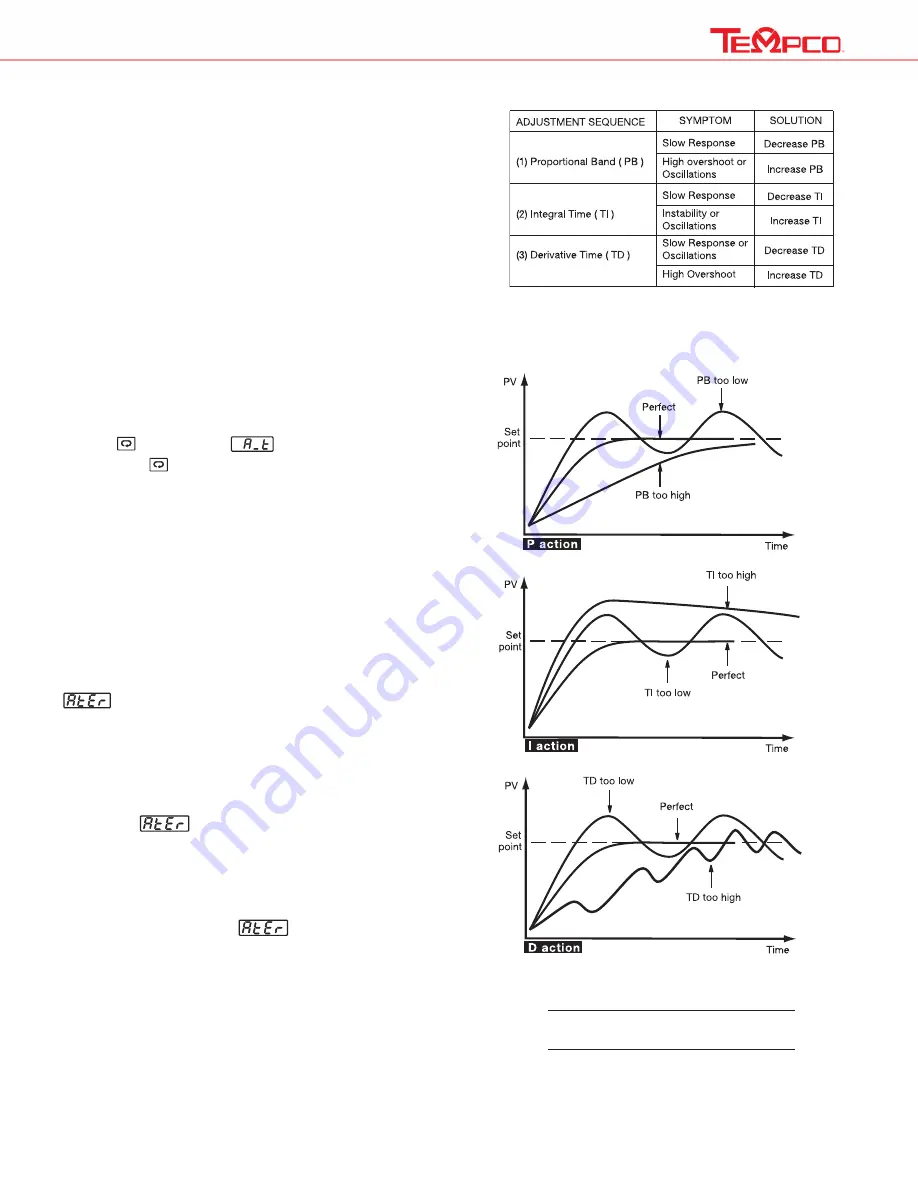
9
Auto-tuning
The auto-tuning process is performed near the set point. The process
will oscillate around the set point during the tuning process. Set the
set point at a lower value if overshooting beyond the normal process
value is likely to cause damage.
Auto-tuning is applied in cases of:
•
Initial setup for a new process
•
The set point is changed substantially from the previous
auto-tuning value
•
The control result is unsatisfactory
Operation:
1. The system has been installed normally.
2. Set the correct values for the setup menu of the unit, but don’t
set a zero value for PB and TI, or the auto-tuning program will
be disabled. The LOCK parameter should be set at NONE.
3. Set the set point to a normal operating value, or a lower value if
overshooting beyond the normal process value is likely to cause
damage.
4. Press
and hold until
appears on the display.
5. Then press
again for at least 5 seconds. The AT indicator will
begin to flash and the auto-tuning procedure begins.
NOTE:
The ramping function, if used, will be disabled when
auto-tuning is taking place.
Auto-tuning mode is disabled as soon as either failure mode or
manual control mode is entered.
Procedures:
Auto-tuning can be applied either as the process is warming up
(cold start), or when the process has been in a steady state (warm
start). After the auto-tuning procedures are completed, the AT
indicator will cease to flash and the unit will revert to PID control
using its new PID values. The PID values obtained are stored in
the nonvolatile memory.
Auto-Tuning Error
If auto-tuning fails an ATER message will appear on the upper
display in the following cases:
• If PB exceeds 9000 (9000 PU, 900.0°F or 500.0°C),
• if TI exceeds 1000 seconds,
• if the set point is changed during the auto-tuning procedure.
Solutions to
1. Try auto-tuning once again.
2. Don’t change the set point value during the auto-tuning procedure.
3. Don’t set a zero value for PB and TI.
4. Use manual tuning instead of auto-tuning (see section 3-12).
5. Touch RESET key to reset
message.
Manual Tuning
In certain applications auto-tuning may be inadequate for the
control requirements. You can try manual tuning for these
applications.
If the control performance using auto-tuning is still unsatisfactory,
the following rules can be applied for further adjustment of PID
values:
Figure 3.9 shows the effects of PID
adjustment on process response.
Figure 3.9 Effects of PID Adjustment
Table 3.2 PID Adjustment Guide






























